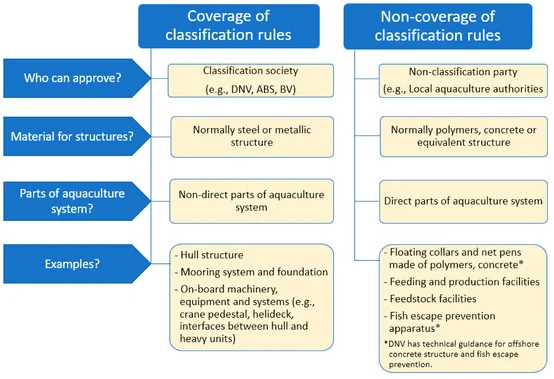Brussels.- An innovative start-up is finalising the development of open-ocean fish farming technology that could reshape the global aquaculture industry, enabling farmers to raise larger quantities of fish in healthier, more natural conditions while minimising environmental impacts.
Supported by EU funding, the OCEANFISH project is helping to bring years of aquaculture research by Israeli-based GiliOcean Technologies to fruition, contributing to the commercial readiness of a unique offshore fish farming system that overcomes many of the environmental challenges of traditional techniques.
“The vast majority of fish farms around the world today are near-shore farms, located close to coastlines to protect them from ocean storms,” says Josef Melchner, CEO of GiliOcean Technologies and coordinator of the OCEANFISH project. “However, these types of farms generate significant problems, for farmers, coastal communities, the environment and end consumers.”
Near-shore farms contribute to the pollution of coastal waters as effluent – including faeces, leftover food and other organic matter – accumulates, impacting local ecosystems and affecting other industries such as tourism. Water pollution, in turn, causes high rates of infection and death among fish, typically countered by adding antibiotics to feed, which ultimately ends up in the human food chain.
In contrast, GiliOcean Technologies’ submersible open ocean net cage system, called SUBflex, allows fish to be raised in their natural environment surrounded by open sea, where effluent floats away and is dissipated by ocean currents. Improved water quality reduces the risk of infection and eliminates the need for antibiotics, producing healthier fish, minimising stock losses and lowering costs for farmers. It also allows fish to be stocked more densely, improving yield, and increases fish growth rates.
“In near-shore fisheries, sea bream can take up to 18 months to reach 300 to 400 grams. With the offshore system, they are reaching that size in 12 months,” Melchner notes.
Submersible, flexible and secure cages
SUBflex, as its name suggests, consists of a submersible and flexible system of cages made of corrosion-resistant, non-dissolving material specifically designed for open ocean conditions.
Stay Always Informed
Join our communities to instantly receive the most important news, reports, and analysis from the aquaculture industry.
Taking care of the fish, including feeding, is carried out while the cages are at surface level, but during storms, rough seas and other adverse weather conditions, valves are opened to submerge the cages to depths of up to 100 metres, enabling the system to withstand wave heights of 17 metres.
This unique capability maintains the integrity of the system, its components and the fish in it, keeping them away from the full intensity of storms. In addition, a single-point mooring means the cages can rotate through 360 degrees, following rather than fighting the ocean currents – an advantage that also allows a very broad dispersion of fish feed waste and fish faeces.
Within the OCEANFISH project, the system is being further enhanced with additional features, including sensor technology to automatically monitor fish stocks and adjust feed quantities, improving efficiency and reducing waste.
Future advancements should also allow the system to be used for farming a broader range of fish species beyond common commercial varieties such as sea bream and sea bass, including open ocean-dwelling Bluefin tuna, for example.
GiliOcean Technologies, which has implemented pilot versions of the system in Israel and describes EU support as having been essential to the firm’s growth, is currently commercialising SUBflex through joint ventures with aquaculture firms in Europe and Latin America as part of plans to distribute the system globally.
The project was funded under the Horizon 2020 programme’s SME Instrument. “The recognition of GiliOcean technology by the SME instrument of the H2020 had a major impact on our company. Entities from all over the world have approached us for collaboration and joint ventures,” says Melchner. “The funding allows us to improve our technology and to take a significant step toward high performance, as well as significantly leverage our worldwide business development and exposure, in and outside of the sector.”
The GiliOcean technology of could provide a significant boost to the global aquaculture industry, already the fastest growing food production sector in the world. With farmed fish set to account for 62 % of the worldwide supply of fish protein by 2030, according to the UN Food and Agricultural Organisation, improving the quality of stocks, eliminating antibiotic use and reducing environmental impacts will be crucial to ensuring the sustainability of the sector.
Project details
Project acronym: OCEANFISH
Participants: Israel (Coordinator)
Project N°: 683610
Total costs: € 3 354 000
EU contribution: € 2 347 800
Duration: August 2015 – July 2017
Project details http://cordis.europa.eu/project/rcn/198394_en.html
Project information http://www.subflex.org/
Source: European Commission
Editor at the digital magazine AquaHoy. He holds a degree in Aquaculture Biology from the National University of Santa (UNS) and a Master’s degree in Science and Innovation Management from the Polytechnic University of Valencia, with postgraduate diplomas in Business Innovation and Innovation Management. He possesses extensive experience in the aquaculture and fisheries sector, having led the Fisheries Innovation Unit of the National Program for Innovation in Fisheries and Aquaculture (PNIPA). He has served as a senior consultant in technology watch, an innovation project formulator and advisor, and a lecturer at UNS. He is a member of the Peruvian College of Biologists and was recognized by the World Aquaculture Society (WAS) in 2016 for his contribution to aquaculture.




